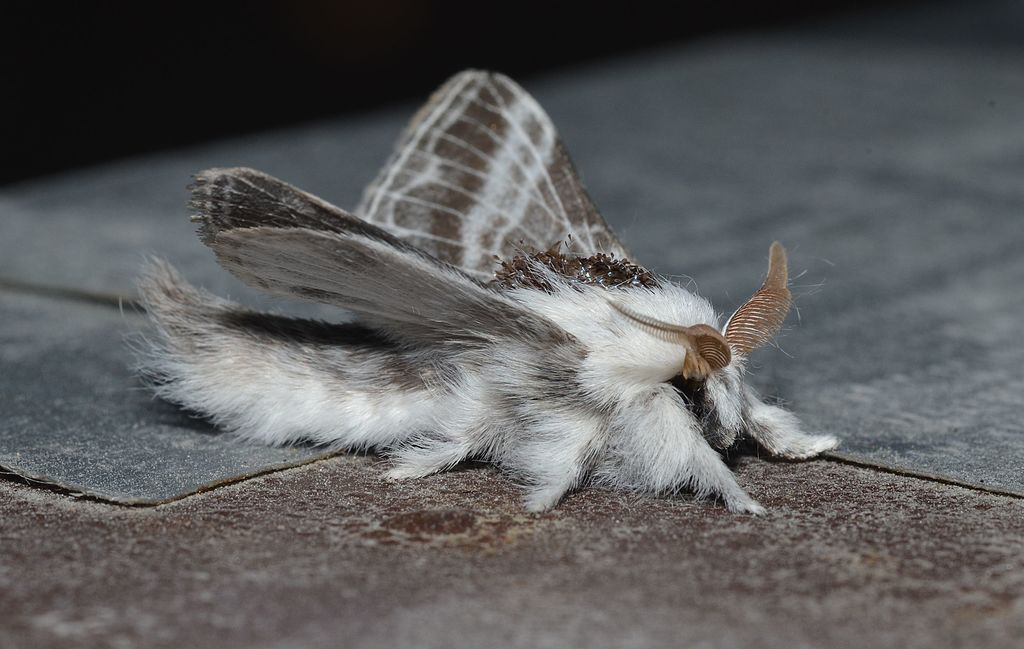Introduction
Tolype moth (Tolype velleda), also called large tolype moth and velleda lappet moth, is a small to medium sized moth in the family Lasiocampidae. Tolype Moth feeds on a bevy of trees and shrubs. Abundant populations can partially or completely defoliate host plants.
Distribution & Habitat
The range of tolype moth extends from Nova Scotia to British Columbia, south to South Carolina, and west to Minnesota, Nebraska, and Texas. Tolype moth is most common in forests, and urban landscapes.
Hosts
Tolype moth primarily infests apple, ash, beech, birch, elm, oak, poplar, plum, and various fruit trees.
Description
The larvae are grey caterpillars covered in long hairs. Enlarged brown or reddish-orange knobs appear on the top of the third thoracic segment. A distinct flap is located on the prolegs. When the larvae are alert, a black dorsal band is revealed on the thorax. The adult females are larger than the males. The females can grow up to 16 mm long, while the males reach 11 to 12 mm in length. The wing span of the insect typically varies between 32 and 58 mm in diameter. The forewings of the males feature pale white veins, and a broad dark grey band. The hindwings are light brown to black, and sometimes form thin white, waxy bands on the surface. The females develop similar markings, but are paler and less conspicuous. On both genders, the head, collar, and tip of the abdomen vary from gray to pale white in coloration. A patch of metallic scales are prominent on the center of the thorax. The body is laden with minute hairs.
Life Cycle
Tolype moth produces one generation per year. In spring, the overwintering eggs hatch, revealing masses of larvae. The larvae initiate feeding on nearby foliage. They continue to feed until August, progressing through several instars before achieving maturation. Once mature, the larvae briefly pupate on host plants, before emerging a few weeks later as adults. The adults do not feed. Instead, they focus on reproduction. The females emit a pheremone that attracts the males. Once the males have located the females, they mate. After mating, the females that have been fertilized deposit batches of eggs on host plants. The females cover the eggs with scales from their thoraxes. The adults expire shortly thereafter. The eggs overwinter and hatch the following spring, beginning the cycle anew.
Symptoms of Infestation
The adults are distinctly colored, which can make them conspicuous on host plants. Dense populations will often defoliate host plants. While defoliation will temporarily reduce the aesthetic quality of host plants, most plants will produce a second flush of growth by fall.
Management
- The insect’s natural predators consist primarily of birds. When present, these natural predators help to limit tolype moth populations.
- While control of tolype moth is seldom required, registered insecticides can be utilized to combat dense populaions. Applications should be performed in spring, as the eggs hatch.
Photo courtesy of Andy Reago & Chrissy McClarren CC-by-2.0
